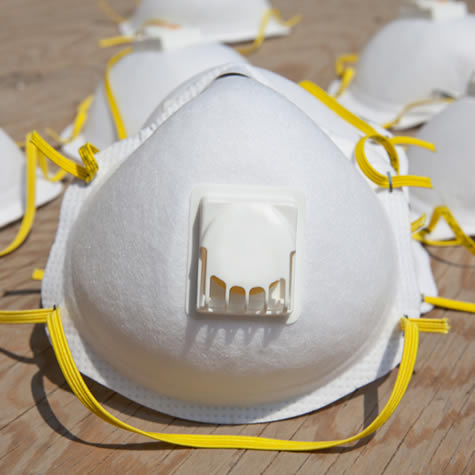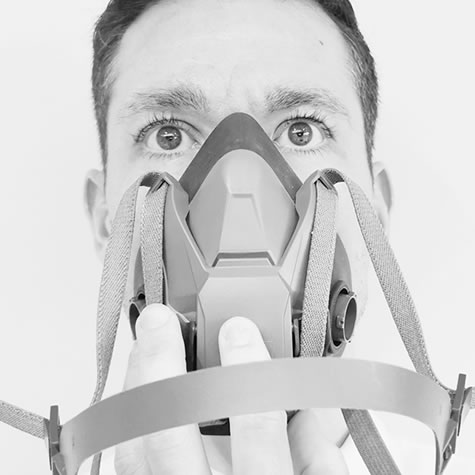Quality Asbestos Training Courses In Neath
Non-Licensed Asbestos Removal Training in Neath
Asbestos pops up all over the place in buildings across the UK. It was so widely used it is often one of those materials we need to be trained to work with.
Neath invested nearly 60 years in using asbestos containing materials within the fabric of its buildings. This has contributed to the awful legacy of ill health, disease and death amongst UK workers. At the last count 5,500 people were losing their lives each and every year to asbestos conditions.
Book Asbestos Training Today
Give us a call to discuss running a non-licenced asbestos training course for you at your premises in Ashford
Asbestos Training in Neath
Whether you are an electrician, a roofer or a grounds-worker, it is highly likely certain aspects of your work in Neath bring you into contact with asbestos containing materials. Asbestos training courses, available in Neath, help teach you to work on these products in line with the Control of Asbestos Regulations 2012. Non-licensed training will ensure you have the knowledge to not only work with asbestos safely, but how to deal with all the other issues around it like method-statements, disposal and transport to name a few.
Neath Asbestos Courses – Non-Licensed Removal Training
By taking part in an accredited training session in Neath, you are assured of a quality service as our course has been externally audited. This verification of compliance with the legal requirements has been carried out by the Independent Asbestos Training Providers (IATP). Our course is certified to meet their standards.

Asbestos Training courses run in Neath, under the IATP accreditation, are 1-day in duration and include asbestos awareness in the syllabus. This avoids the longer and more costly route stipulated by UKATA saving you both time and money. As a further advantage, Fit2Fit accredited face fit testing is also available as part of the course.
About Neath
Historically, Neath was the crossing place of the River Neath and has existed as a settlement since the Romans established the fort of Nido or Nidum in the AD 70s. The Roman fort took its name from the River Nedd; the meaning is obscure but ‘shining’ or simply ‘river’ have been suggested. Neath is the Anglicised form. The Antonine Itinerary (c.?2nd century) names only nine places in Roman Wales, one of them being Neath. There is evidence of undated prehistoric settlements, probably Celtic, on the hills surrounding the town. The fort covered a large area which now lies under the playing fields of D?r-y-Felin Comprehensive School. In the late 1960s, there were reports in the local media of a massive Roman marching camp being found above Llantwit which would have accommodated many thousands of troops.St Illtyd visited the Neath area and established a settlement in what is now known as Llantwit on the northern edge of the town. The church of St Illtyd was built at this settlement and was enlarged in Norman times. The Norman and pre-Norman church structure remains intact and active to day within the Church in Wales. The Welsh language name for Neath is Castell-nedd, referring to the Norman Neath Castle, which was visited by English kings Henry Curtmantle, John Lackland and Edward Longshanks.Neath CastleNeath was a market town that expanded with the arrival of the Industrial Revolution in the 18th century with new manufacturing industries of iron, steel and tinplate. The Mackworth family, who owned the Gnoll Estate were prominent in the town’s industrial development. Coal was mined extensively in the surrounding valleys and the construction of canals and railways made Neath a major transportation centre and the Evans & Bevan families were major players in the local coal mining community as well as owning the Vale of Neath Brewery. Silica was mined in the Craig-y-Dinas area of Pontneddfechan, after Quaker entrepreneur William Weston Young invented the blast furnace silica firebrick, later moving brick production from the works at Pontwalby to the Green in Neath. The town continued as a market trading centre with a municipal cattle market run by W.B.Trick. Industrial development continued throughout the 20th century with the construction by BP of a new petroleum refinery at Llandarcy.Admiral Lord Nelson stayed at the Castle Hotel en route to Milford Haven when the fleet was at anchor there[citation needed]. Lt. Lewis Roatley, the son of the landlord of the Castle Hotel, served as a Royal Marines officer with Nelson aboard HMS Victory in the Battle of Trafalgar.The River Neath is a navigable estuary and Neath was a river port until recent times. The heavy industries are no more with the town being a commercial and tourism centre. Attractions for visitors are the ruins of the Cistercian Neath Abbey, the Gnoll Park and Neath Indoor Market.Neath hosted the National Eisteddfod of Wales in 1918, 1934 and 1994. The art work was unveiled intact at its new setting in the centre of Port Talbot after being lifted by crane onto a lorry and moved slowly and carefully to Tyr Orsaf, an award winning homes and shops development opposite the towns transport hub and railway station.Seasons Greetings suddenly appeared on steelworker Ian Lewiss garage in Taibach last December and news of its dramatic arrival quickly spread across the world. In January this year, Essex gallery owner and street art expert John Brandler purchased the famous mural for a six figure sum.Subsequently, Neath Port Talbot Council entered into a partnership with Mr Brandler, housing group Pobl and the Welsh Government to place Seasons Greetings in a commercial unit in Tyr Orsaf.Experienced Port Talbot based building and civil engineering firm Andrew Scott Ltd undertook the tricky job of transporting the iconic Banksy, cutting the art work from the rest of the garage with a diamond drill.Afterwards, a sturdy steel framework was put in place to act as a cradle when the artwork was lifted by into the air the strain being put on the steel frame, not the artwork. The Banksy was successfully loaded onto a lorry and taken with a police escort to Tyr Orsaf photographed all the way by members of the public, press and media – where it was successfully installed.The section of wall on which Seasons Greetings was painted weighs around 4.5 tonnes.The Leader of Neath Port Talbot Council, Cllr Rob Jones said afterwards: We are pleased to be working in partnership with the Welsh Government, Pobl and Mr Brandler on this and our thanks go to Andrew Scott Ltd for an excellent job in moving this piece of art.





